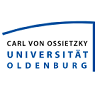Phd Position - Oldenburg, Deutschland - Carl von Ossietzky Universität Oldenburg
Beschreibung
PhD position (M/F/d)
Salary according to TV-L E13, 100%
The erratic and unpredictable nature of turbulent inflow imposes significant challenges for the design of wind turbines.
The ever-increasing size of wind turbines calls for the development of new stochastic models and numerical schemes for turbulent inflow.
An essential part of this process is a better understanding of the atmospheric boundary layer, the environment to which a wind turbine is exposed.
We welcome you to join us on our path toward an improved atmospheric turbulence model that will allow us to better predict aerodynamic loads.
Furthermore, it should allow our engineers to develop mitigation strategies that protect turbines during extreme events in harsh offshore environments.
The main objective of the PhD project is to develop further numerical and stochastic wind field models that consider the empirically observed presence of large-scale coherent structures and the accurate statistical significance of extreme wind gusts in the atmospheric boundary later.
A secondary goal is analysing the relationship between the generated inflow wind fields and the wind turbine rotor loads and dynamics for various atmospheric conditions.
Among others, the job will comprise:
- Developing code based on resolvent analysis for the computationally efficient numerical simulation of inflow turbulence
- Stochastic wind field reconstruction and modelling (incl. uncertainty analysis) for a variety of atmospheric conditions
- Processing large amounts of wind field data by combining lidar measurements with meteorological information, possibly flow models and wind turbine load data
- Identification of turbulence structures with high relevance for the turbine loading by aeroelastic simulations
- Active collaboration with more experimentally oriented research groups, e.g. with the Lidar & Wakes team (6 PhDs and Postdocs), the Turbulence, Wind Energy Systems group and project partners
- Working with technicians and test engineers of the SGRE prototype test sites and with the meteorologists of the SGRE Weather and Energy Forecasting service
- Exchanging scientific results at meetings and conferences
- knowledge of at least two of the following three fields: experimental/numerical fluid dynamics, statistical analysis of large data amounts and measurement techniques
- experience in programming with at least one interpreted language (MATLAB, Python, Julia)
- motivation and ability to effectively collaborate with a diverse and international team of researchers
- fluently spoken and written English
Research environment at ForWind - University of Oldenburg
Wind energy research at the University of Oldenburg has gained international recognition by its integration into ForWind - Center for Wind Energy Research of the Universities of Oldenburg, Hannover, and Bremen and the national Wind Energy Research Alliance of the German Aerospace Center (DLR) and Fraunhofer Institute for Wind Energy Systems (IWES).
At ForWind, we maintain and value collaboration with partner institutions such as the European Academy of Wind Energy members and our research groups.
In Oldenburg, our 50 physics, meteorology, and engineering researchers are collaborating at the "Research Laboratory for Turbulence and Wind Energy Systems" centered on wind physics.
Our mission is to develop the improved understanding of atmospheric and wind power plant flow physics required to serve the global demand for clean and affordable electricity.
Therefore, we conduct laboratory experiments, free-field measurements and HPC-based numerical simulations. Our research facilities comprise three turbulent wind tunnels, various equipment for free-field measurements at on- and offshore wind farms and a high-performance computing cluster.
Working environment at Siemens Gamesa
Siemens Gamesa came into being in 2017 when Siemens Wind Power and Gamesa united their wind power business.
Today, it represents a team of 28,150 individuals from over 100 nationalities, all motivated to tackle the great challenge of our generation.
The climate crisis cannot be solved single-handedly, and through working with our customers and partners, we engineer, build, and deliver clean energy to ensure that our collective contribution makes the most significant impact.
As the leading R&D site of SGRE in The Netherlands, our office in The Hague hosts engineers working on a wide variety of environmental models (seismic & soil, ice, hydrodynamic & surface waves, atmospheric), all aimed at enabling and improving the site-specific wind turbine design.
Mehr Jobs von Carl von Ossietzky Universität Oldenburg
-
Research Associate
Oldenburg, Deutschland - vor 3 Tagen
-
Wissenschaftliche r Mitarbeiter in/doktorand in
Oldenburg, Deutschland - vor 1 Woche
-
Wissenschaftliche r Mitarbeiter in
Oldenburg, Deutschland - vor 3 Tagen
-
Scientist / Research Associate (M/F/d), E13
Oldenburg, Deutschland - vor 1 Woche
-
Wissenschaftliche r Mitarbeiter in
Oldenburg, Deutschland - vor 4 Tagen
-
Referentin im Drittmittelcontrolling
Oldenburg, Deutschland - vor 1 Woche

